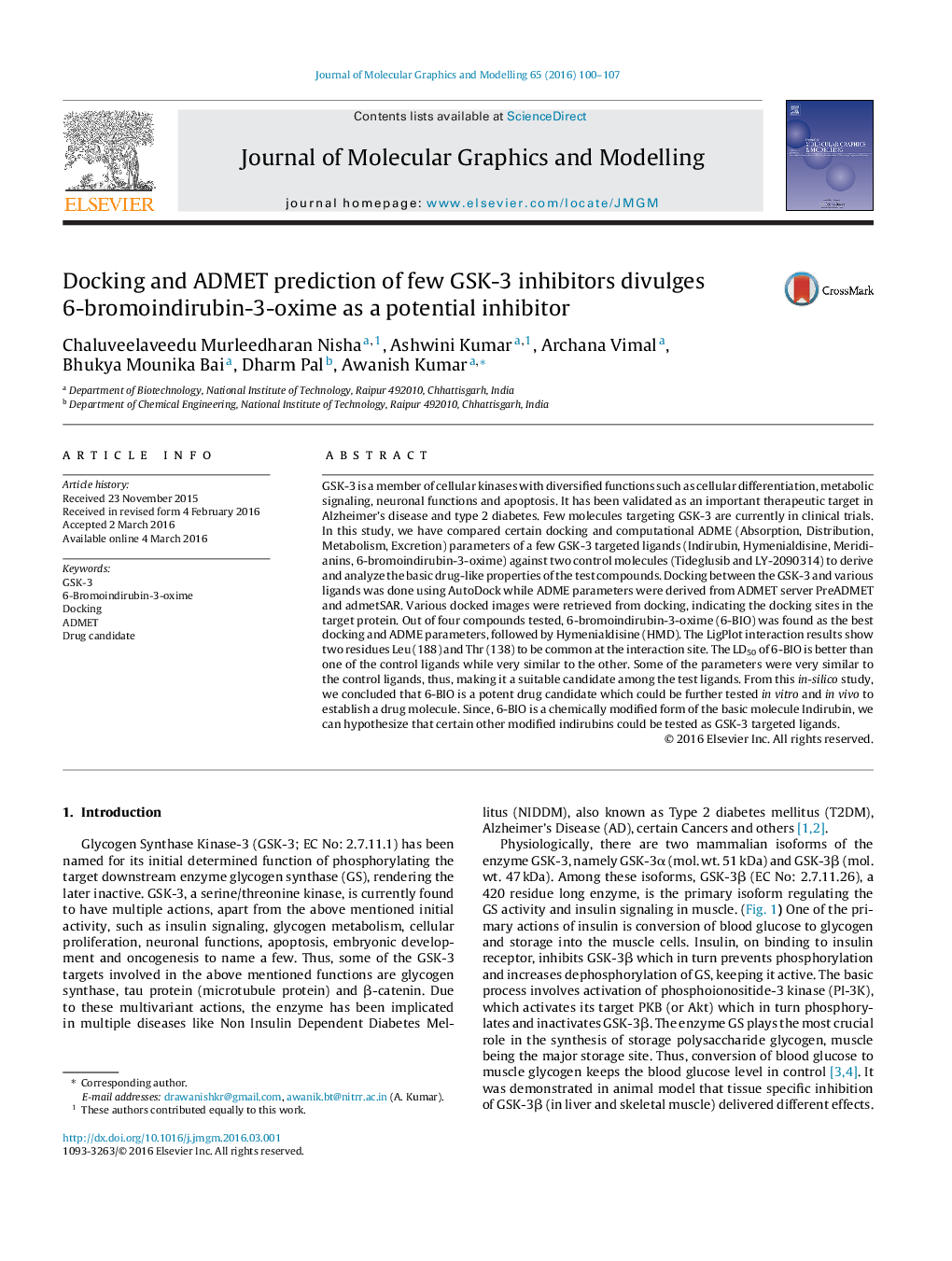| کد مقاله | کد نشریه | سال انتشار | مقاله انگلیسی | نسخه تمام متن |
|---|---|---|---|---|
| 443421 | 692719 | 2016 | 8 صفحه PDF | دانلود رایگان |
• GSK-3 is a potential target for several diseases like Diabetes, Alzheimer’s Disease, and cancers.
• AutoDock, PreADMET and admetSAR were used for the various in-silico studies.
• Indirubin derivatives, hymenialdisine, meridianins were found potent GSK-3 inhibitors.
• These ligands are found to have in-silico properties similar to the control ligands.
• Docking and in-silico ADMET studies shown 6-bromoindirubin 3-oxime (an indirubin derivative) to be the best inhibitor among the selected ligands.
GSK-3 is a member of cellular kinases with diversified functions such as cellular differentiation, metabolic signaling, neuronal functions and apoptosis. It has been validated as an important therapeutic target in Alzheimer’s disease and type 2 diabetes. Few molecules targeting GSK-3 are currently in clinical trials. In this study, we have compared certain docking and computational ADME (Absorption, Distribution, Metabolism, Excretion) parameters of a few GSK-3 targeted ligands (Indirubin, Hymenialdisine, Meridianins, 6-bromoindirubin-3-oxime) against two control molecules (Tideglusib and LY-2090314) to derive and analyze the basic drug-like properties of the test compounds. Docking between the GSK-3 and various ligands was done using AutoDock while ADME parameters were derived from ADMET server PreADMET and admetSAR. Various docked images were retrieved from docking, indicating the docking sites in the target protein. Out of four compounds tested, 6-bromoindirubin-3-oxime (6-BIO) was found as the best docking and ADME parameters, followed by Hymenialdisine (HMD). The LigPlot interaction results show two residues Leu (188) and Thr (138) to be common at the interaction site. The LD50 of 6-BIO is better than one of the control ligands while very similar to the other. Some of the parameters were very similar to the control ligands, thus, making it a suitable candidate among the test ligands. From this in-silico study, we concluded that 6-BIO is a potent drug candidate which could be further tested in vitro and in vivo to establish a drug molecule. Since, 6-BIO is a chemically modified form of the basic molecule Indirubin, we can hypothesize that certain other modified indirubins could be tested as GSK-3 targeted ligands.
Figure optionsDownload high-quality image (138 K)Download as PowerPoint slide
Journal: Journal of Molecular Graphics and Modelling - Volume 65, April 2016, Pages 100–107
